Abstract
In a study designed to seek a suitable drug for mass chemotherapy during a cholera epidemic, four drugs were administered in single doses to patients with cholera in Iran. Streptomycin was administered orally; penicillin, parenterally; and chloramphenicol and a long-acting sulfa drug, both orally and parenterally. No drug consistently eliminated vibrios from the intestinal tract. Chloramphenicol was also administered in multiple doses for three days; this also failed to eliminate vibrios in one-third of 25 patients studied. The major problem with these drugs administered orally seems to be rapid elimination and poor absorption by patients with diarrhoea. The authors do not recommend any of these drugs for single-dose mass chemotherapy and consider that chloramphenicol cannot be recommended for multiple-dose mass chemotherapy.
Full text
PDF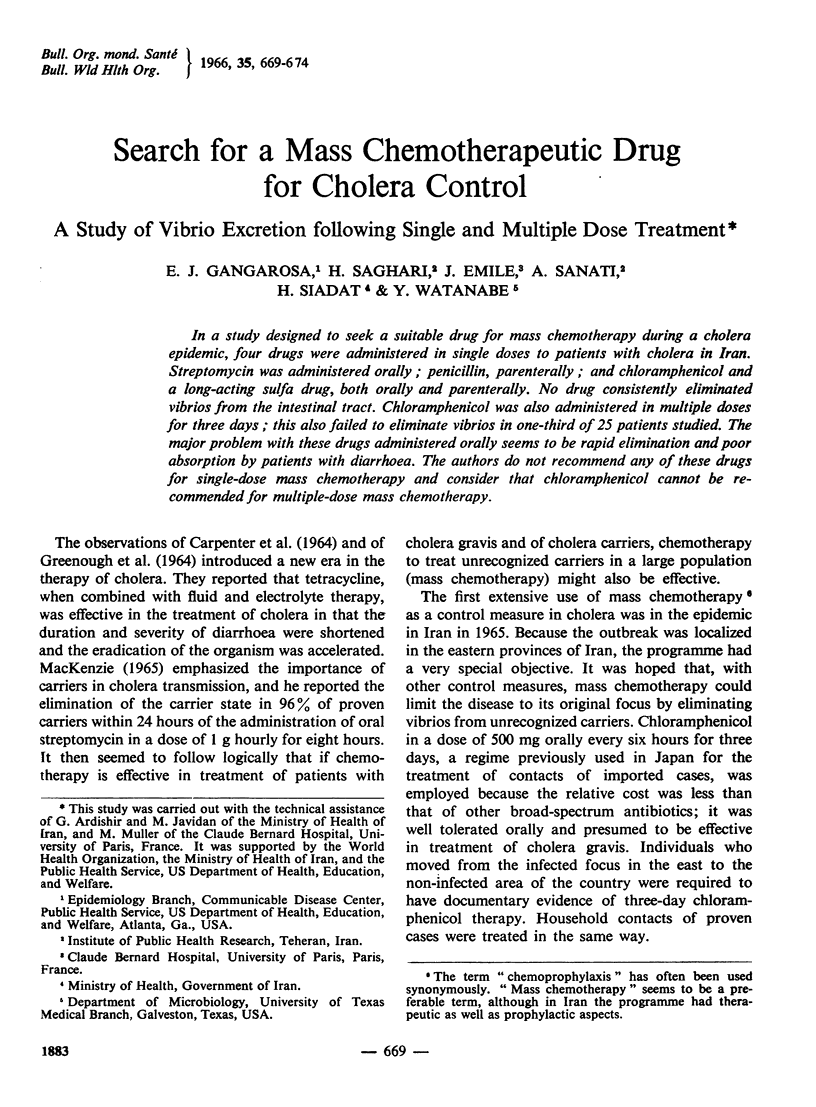
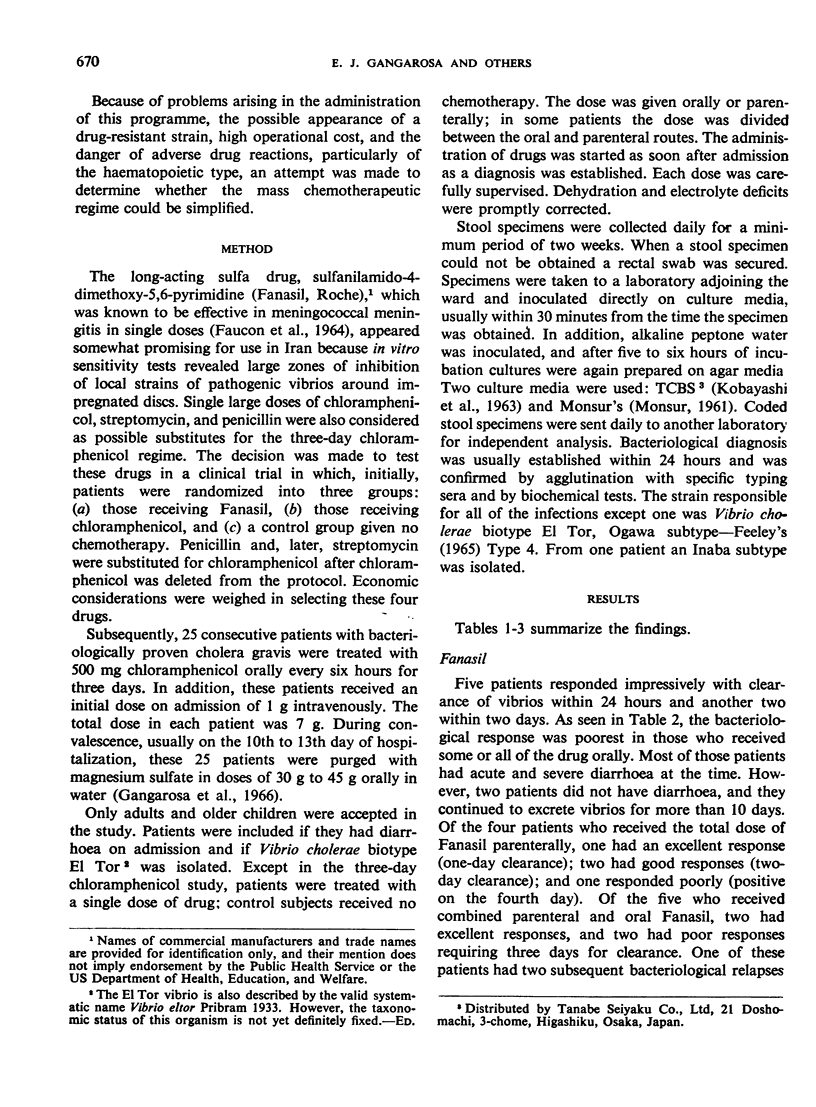
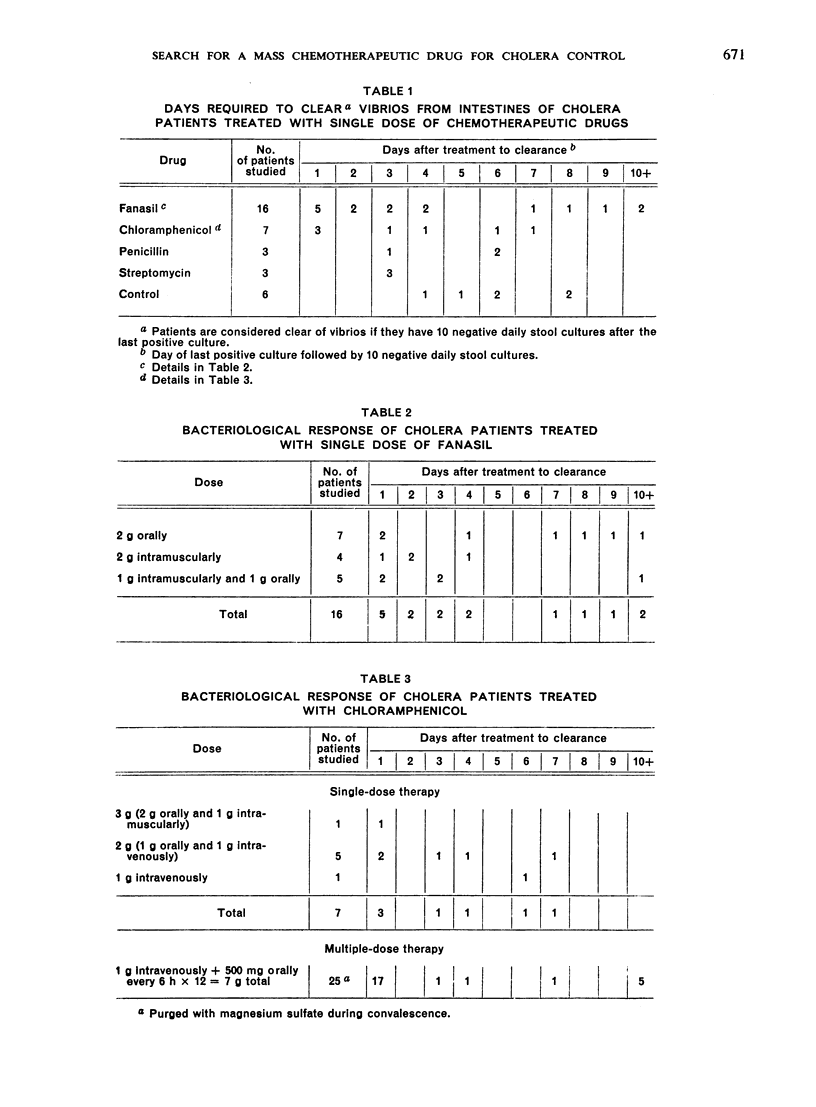
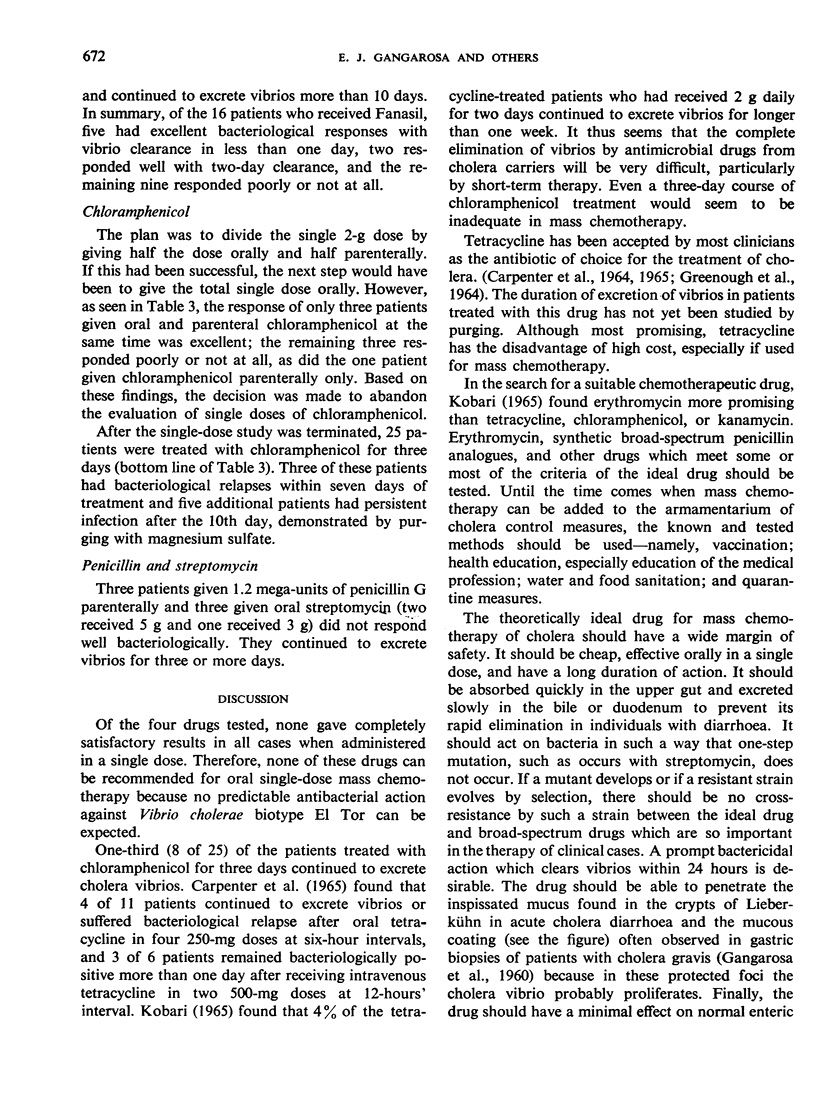
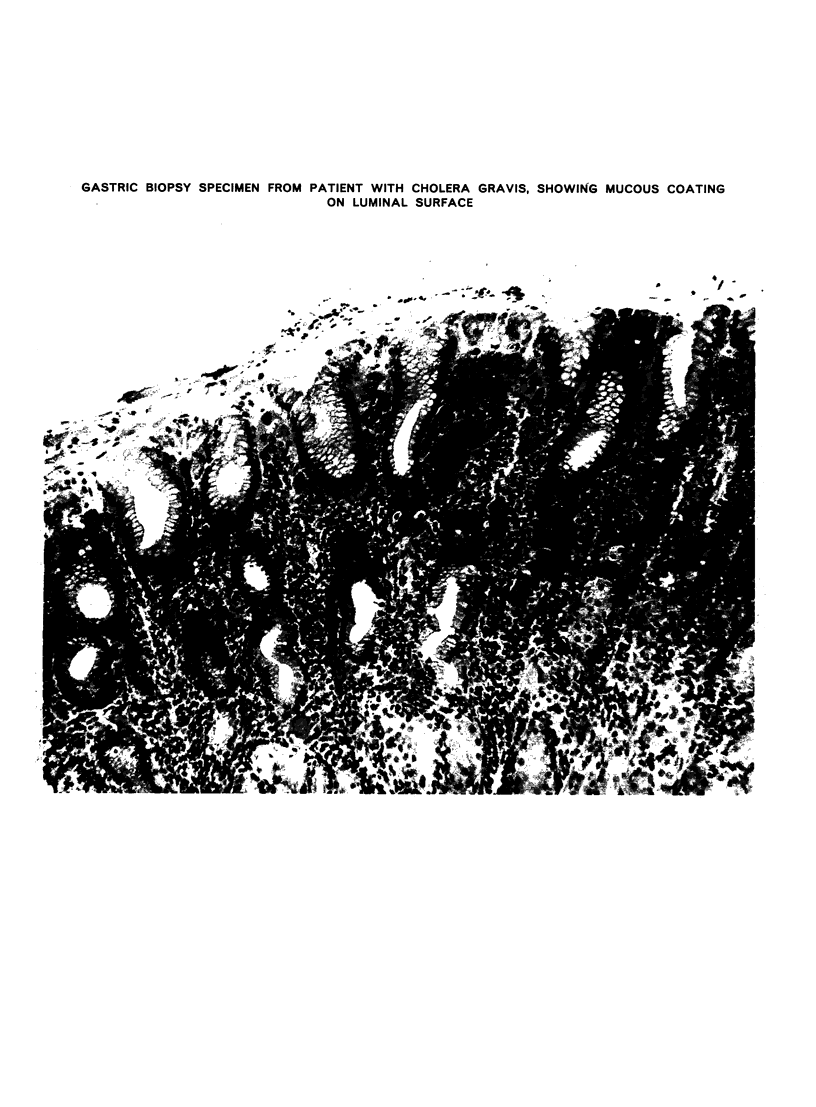
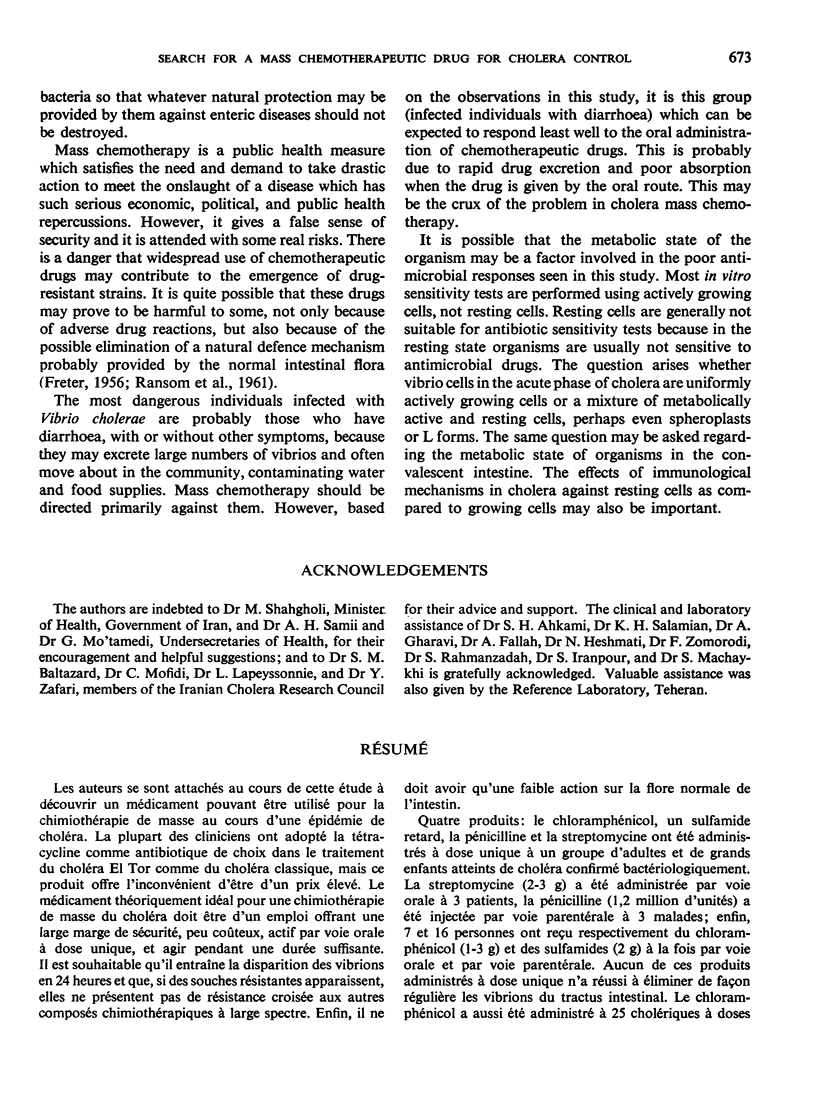
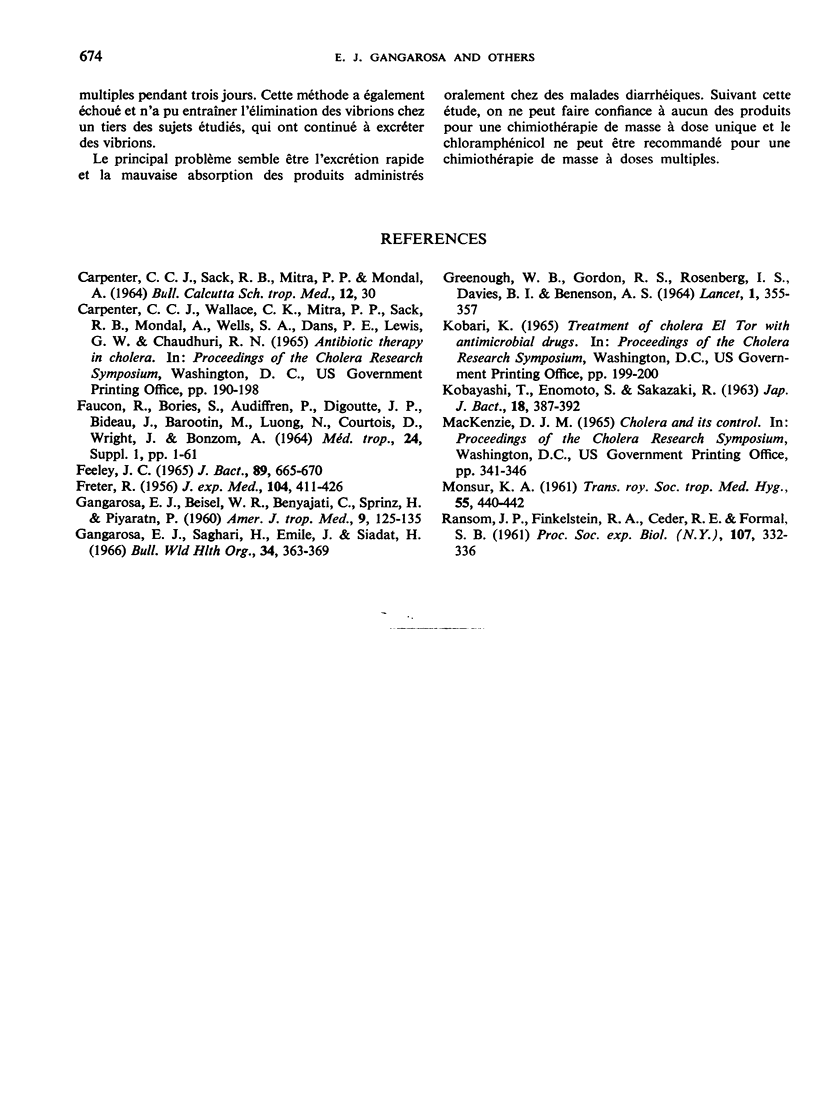
Images in this article
Selected References
These references are in PubMed. This may not be the complete list of references from this article.
- DATTA G., SAHA T. K. TETRACYCLINE THERAPY IN CHOLERA. Bull Calcutta Sch Trop Med. 1964 Jan;12:30–33. [PubMed] [Google Scholar]
- FEELEY J. C. CLASSIFICATION OF VIBRIO CHOLERAE (VIBRIO COMMA), INCLUDING EL TOR VIBRIOS, BY INFRASUBSPECIFIC CHARACTERISTICS. J Bacteriol. 1965 Mar;89:665–670. doi: 10.1128/jb.89.3.665-670.1965. [DOI] [PMC free article] [PubMed] [Google Scholar]
- FRETER R. Coproantibody and bacterial antagonism as protective factors in experimental enteric cholera. J Exp Med. 1956 Sep 1;104(3):419–426. doi: 10.1084/jem.104.3.419. [DOI] [PMC free article] [PubMed] [Google Scholar]
- GANGAROSA E. F., BEISEL W. R., BENYAJATI C., SPRINZ H., PIYARATN P. The nature of the gastrointestinal lesion in asiatic cholera and its relation to pathogenesis: a biopsy study. Am J Trop Med Hyg. 1960 Mar;9:125–135. doi: 10.4269/ajtmh.1960.9.125. [DOI] [PubMed] [Google Scholar]
- GREENOUGH W. B., 3rd, GORDON R. S., Jr, ROSENBERG I. S., DAVIES B. I., BENENSON A. S. TETRACYCLINE IN THE TREATMENT OF CHOLERA. Lancet. 1964 Feb 15;1(7329):355–357. doi: 10.1016/s0140-6736(64)92099-9. [DOI] [PubMed] [Google Scholar]
- Gangarosa E. J., Saghari H., Emile J., Siadat H. Detection of Vibrio cholerae biotype El Tor by purging. Bull World Health Organ. 1966;34(3):363–369. [PMC free article] [PubMed] [Google Scholar]
- KOBAYASHI T., ENOMOTO S., SAKAZAKI R., KUWAHARA S. [A NEW SELECTIVE ISOLATION MEDIUM FOR THE VIBRIO GROUP; ON A MODIFIED NAKANISHI'S MEDIUM (TCBS AGAR MEDIUM)]. Nihon Saikingaku Zasshi. 1963 Nov;18:387–392. doi: 10.3412/jsb.18.387. [DOI] [PubMed] [Google Scholar]
- MONSUR K. A. A highly selective gelatin-taurocholate-tellurite medium for the isolation of Vibrio cholerae. Trans R Soc Trop Med Hyg. 1961 Sep;55:440–442. doi: 10.1016/0035-9203(61)90090-6. [DOI] [PubMed] [Google Scholar]
- RANSOM J. P., FINKELSTEIN R. A., CEDER R. E., FORMAL S. B. Interactions of Vibrio cholerae, Shigella flexneri, Enterococci, and Lactobacilli in continuously fed cultures. Proc Soc Exp Biol Med. 1961 Jun;107:332–336. doi: 10.3181/00379727-107-26617. [DOI] [PubMed] [Google Scholar]



